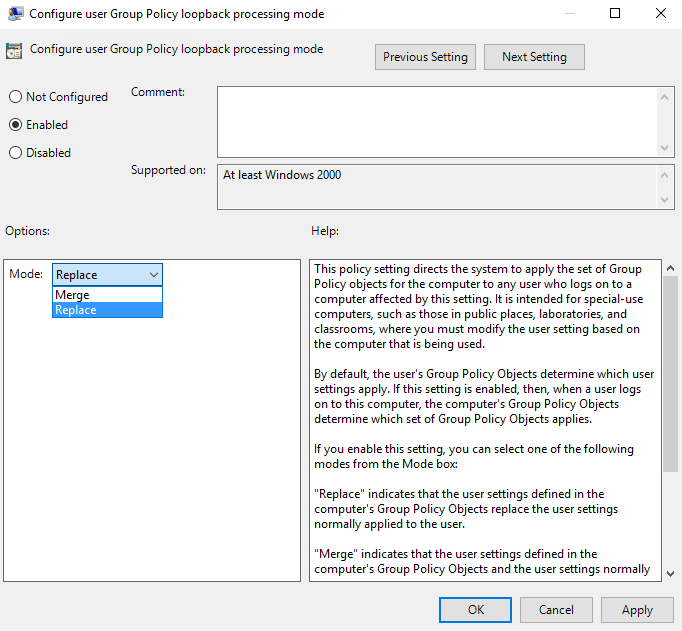Implementing Loopback Policy Processing is easier than it sounds. The difficult part is understanding how this setting is going to affect your machines.
Generally, you want to lump your loopbacked computers into one location. So, for example, if you are enabling loopback processing for some lobby/kiosk computers, you could create an OU called Lobby Computers and put them all inside. Or, for RDS servers, create one OU called Remote Desktop Session Host Servers and make sure all of the RDSH servers make their way inside that OU.
Now create your GPO, and link it to your new OU. This new GPO will contain the User Configuration settings that you want to apply to all user accounts (disable the Shut down button, hide the Control Panel, set a firm desktop wallpaper, and so on), and this GPO will also include the setting to enable Loopback processing. Without enabling the loopback setting, this GPO would do nothing at all, because remember that in normal Group Policy circumstances, when those RDS servers spin through this GPO they are only going to be looking at the Computer Configuration settings, and anything that you plugged into User Configuration would be ignored. By enabling Loopback processing (which is a Computer Config setting), it first enables the RDS server to know it needs to do loopback processing, and then it spins back through the same GPO looking for User Configuration settings. The setting to enable Group Policy Loopback Processing is Computer Configuration | Policies | Administrative Templates | System | Group Policy.
Here, you are going to Configure user Group Policy loopback processing mode. This is the location where you enable loopback processing, and set it to either Merge or Replace mode:

